How Schools Can Foster Creativity and Innovation
10 December 2024
In today's rapidly changing world, creativity and innovation aren't just nice-to-have skills; they're absolutely essential. Whether students aspire to be artists, engineers, entrepreneurs, or scientists, fostering an environment that encourages creative thinking and problem-solving is crucial for their long-term success. But the big question is: How can schools foster creativity and innovation?
It's time to dig deeper into this question and uncover strategies that can unlock the full creative potential in students.
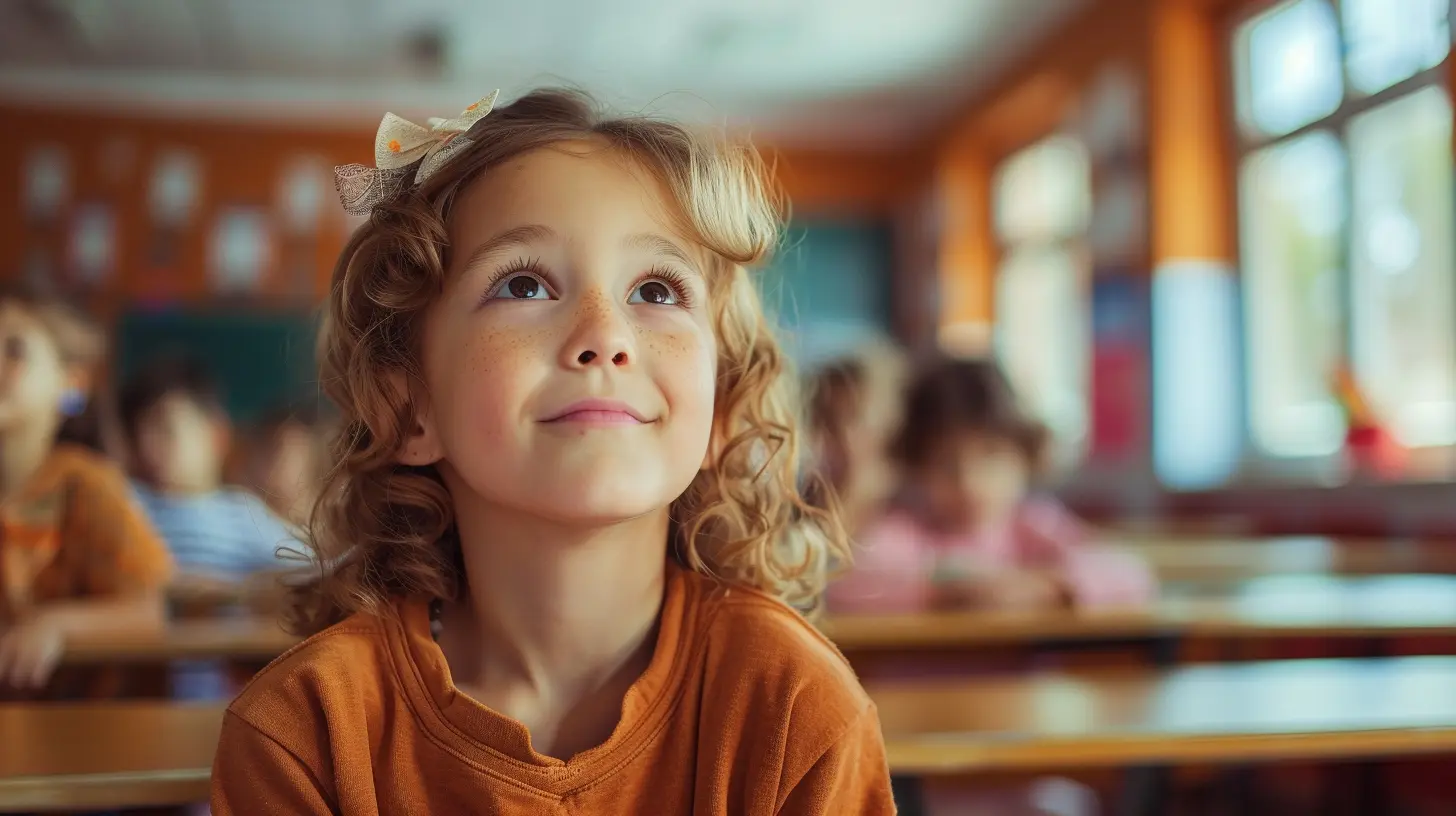
Why Creativity and Innovation Matter in Education
Before we dive into the "how," let's establish the "why." Why should schools care about fostering creativity and innovation?The simple answer is that the world is evolving at a breakneck speed. The careers of tomorrow don't even exist yet. The problems we'll face in the next 10, 20, or 50 years will require innovative solutions that haven't been thought of yet. So, students need more than just the ability to memorize facts and follow instructions—they need to be equipped with the tools to think outside the box and come up with ideas that have never been considered before.
In a world where automation is taking over repetitive tasks, creativity is one of the last frontiers where humans truly shine. It's the secret sauce that can set students apart from their peers, giving them the edge in a competitive global economy.
The Importance of Innovation in a Fast-Paced World
Innovation is the application of creative solutions to real-world problems. Without innovation, societal growth stagnates. Think about it: every invention, every solution to a challenging problem, stems from innovation. Whether it's technology, medicine, or even social change, the ability to approach problems from new angles and come up with fresh solutions is invaluable.So, how can schools lay the groundwork for this kind of forward-thinking mindset?

Breaking Down Barriers to Creativity in Schools
Before we explore the methods for fostering creativity, it's important to acknowledge that schools, by their very nature, can sometimes stifle creativity. Traditional educational systems tend to reward conformity, standardization, and "playing it safe." Students are often conditioned to fear failure, which is the enemy of innovation.But it doesn’t have to be that way! Schools can shift their focus to encourage creativity and innovation by addressing a few common barriers:
1. Fear of Failure
Let’s face it: no one likes to fail. But failure is often a necessary stepping stone on the path to success. Schools that emphasize grades and test scores can inadvertently create a culture where students are afraid to take risks. After all, why take a creative leap if it might result in a lower grade?To foster creativity, schools need to create an environment where failure is seen as part of the learning process. Encourage students to experiment, fail, and try again. After all, many of the greatest innovations in history—from the lightbulb to the iPhone—were born out of trial and error.
2. Overemphasis on Standardized Testing
While standardized tests have their place, they often prioritize rote memorization over critical thinking and creativity. When the focus is solely on acing tests, students may miss out on opportunities to explore and think creatively.Schools should aim to strike a balance between standardized testing and creative pursuits. Incorporating more project-based assessments or creative problem-solving exercises can help shift the focus from “right answers” to innovative thinking.
3. Lack of Time for Unstructured Play
In a world of jam-packed schedules, students often move from one structured activity to another, leaving little room for daydreaming or creative play. Yet, unstructured time is where creativity tends to flourish. When students have the freedom to explore ideas without fear of judgment or time constraints, they can come up with truly innovative solutions.Schools can combat this by building time for unstructured, open-ended activities into the day. This could be as simple as a "genius hour," where students are free to pursue projects that interest them. It’s during these periods of exploration that creativity thrives.
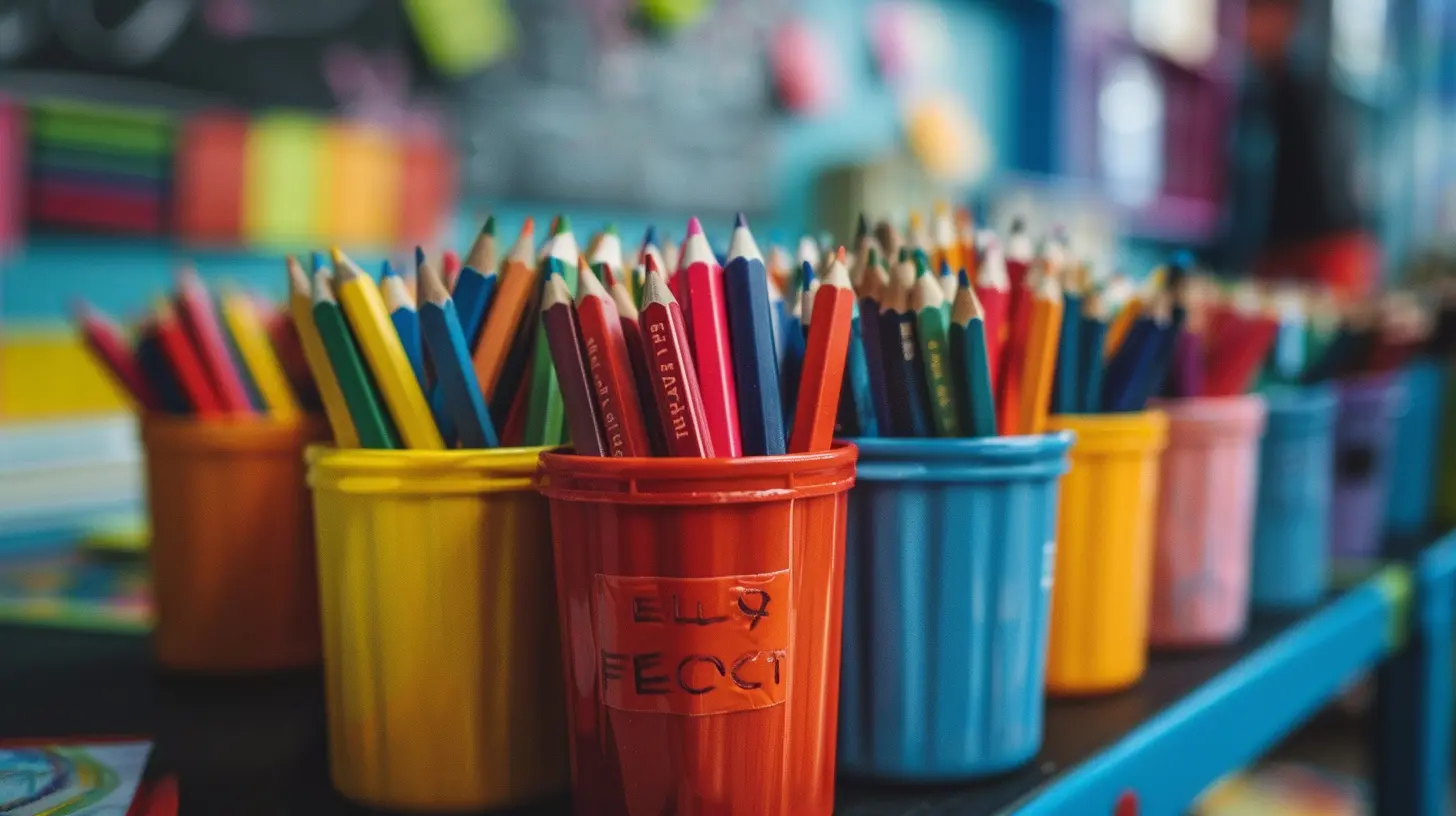
Strategies to Foster Creativity and Innovation in Schools
Now that we’ve identified some barriers, let’s explore practical strategies that schools can implement to foster creativity and innovation.1. Encourage Cross-Disciplinary Learning
Creativity often happens at the intersection of different fields. Think of Steve Jobs, who famously combined his love of technology with his passion for the liberal arts to create groundbreaking products at Apple.Schools can foster this kind of cross-disciplinary thinking by encouraging students to explore a variety of subjects. For example, pairing science with art or technology with music can lead to exciting new ideas. When students are exposed to different ways of thinking, they start to see connections between fields that might not be obvious at first glance.
2. Promote Collaborative Learning
Two heads are better than one, right? Collaboration is a key driver of innovation. When students work together, they can bounce ideas off each other, challenge each other’s thinking, and come up with more creative solutions than they might on their own.Teachers can foster collaboration by designing group projects that require creative problem-solving. Whether students are designing a new product, solving a real-world problem, or planning a community service project, collaboration encourages them to brainstorm and think creatively as a team.
3. Incorporate Creative Problem-Solving Challenges
One of the best ways to encourage innovation is to give students opportunities to solve real-world problems. This could be through design challenges, hackathons, or project-based learning.For example, a science class could challenge students to design an eco-friendly product, while a social studies class might ask students to come up with solutions to a global issue like climate change or poverty. These types of activities push students to think critically and creatively, applying what they've learned in the classroom to solve complex problems.
4. Create an Open, Supportive Environment
If students are afraid of being judged or criticized, they won’t feel comfortable expressing their creative ideas. Schools should strive to create an environment where all ideas are valued, and students are encouraged to take risks.Teachers can foster this kind of environment by praising effort and creativity, rather than just the final product. When students know that their ideas are respected, they’re more likely to push boundaries and think outside the box.
5. Utilize Technology as a Creative Tool
Technology is a powerful tool for fostering creativity and innovation. From coding and robotics to graphic design and video production, there are countless ways that technology can be used to encourage creative thinking.Schools should provide students with access to technology, not just for passive consumption but for active creation. For example, students can use coding platforms like Scratch to create their own games or use 3D printers to bring their designs to life. The key is to allow students to use technology as a tool for creative expression.
6. Integrate Arts and Design Thinking
Creativity isn’t limited to art class, but the arts play a crucial role in fostering creative thinking. Schools should integrate arts education into the curriculum and use design thinking strategies across subjects. Design thinking, which involves empathizing, defining problems, ideating, prototyping, and testing, is an excellent framework for creative problem-solving.By integrating arts and design thinking into subjects like science, math, and social studies, students learn to approach problems with a creative mindset, considering multiple perspectives and thinking outside the box.
7. Encourage Reflection and Mindfulness
Creativity often strikes during moments of reflection. Schools can foster creativity by giving students time to reflect on their ideas and experiences. Mindfulness practices, such as journaling, meditation, or quiet time, can help students tap into their creative side.When students have the space to slow down and reflect, they can make connections between ideas and spark creative insights. Encourage students to keep a creativity journal where they can jot down ideas, sketches, or inspirations—this can help them develop a habit of thinking creatively on a regular basis.
8. Provide Opportunities for Passion Projects
One of the best ways to inspire creativity is to let students pursue their passions. Schools can encourage students to take ownership of their learning by allowing them to work on passion projects. These are self-directed projects where students choose a topic they’re passionate about and explore it in depth.Whether it’s writing a novel, building a robot, or starting a community initiative, passion projects allow students to dive deep into their interests and develop their creativity in a meaningful way.
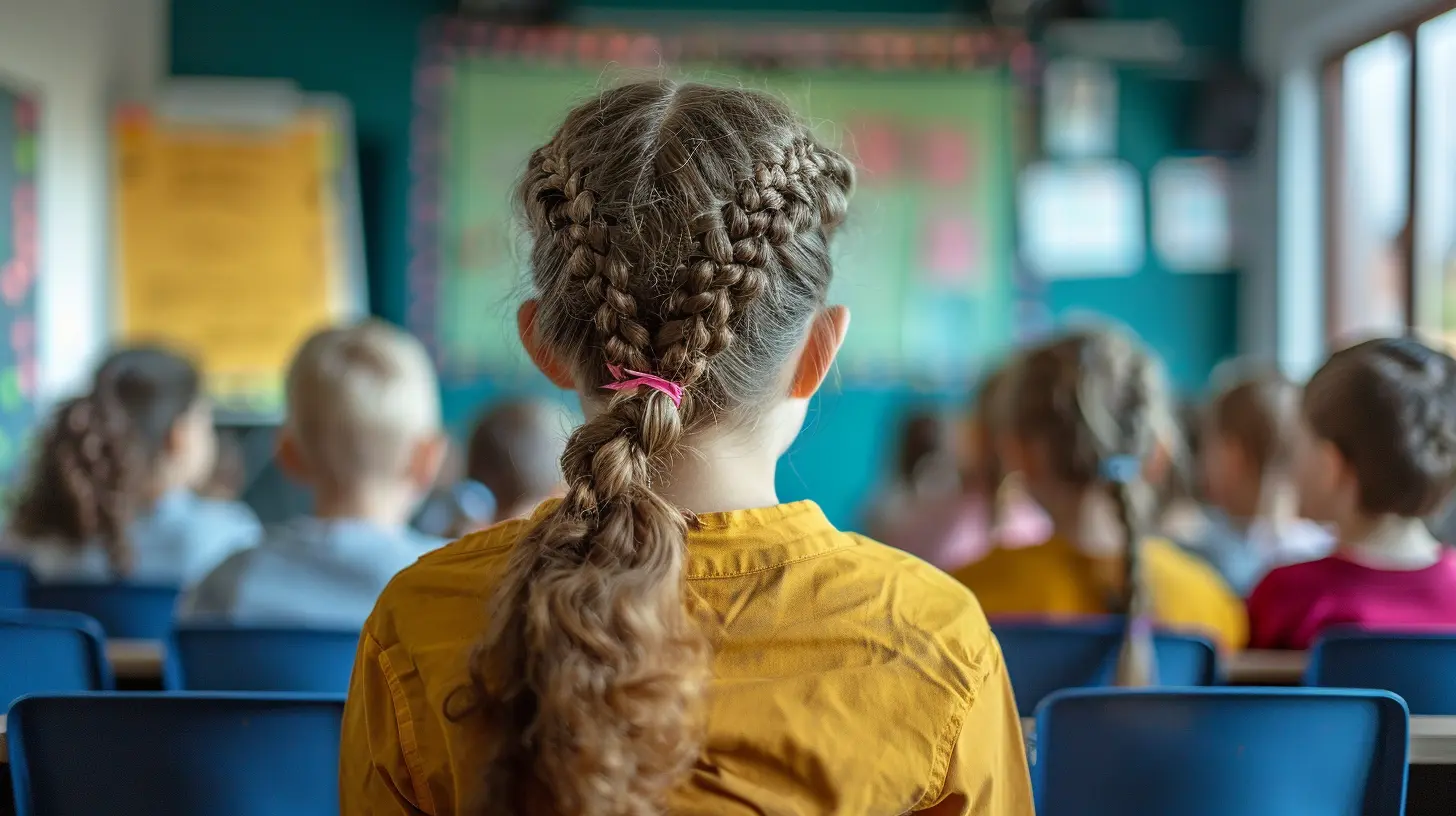
The Role of Teachers in Fostering Creativity
Teachers play a pivotal role in fostering creativity and innovation in the classroom. Here are a few ways teachers can support creative thinking:- Model creativity: Teachers who demonstrate creative thinking in their own work inspire students to do the same. This could be as simple as showing enthusiasm for trying new things, experimenting with lesson plans, or sharing personal creative projects with students.
- Ask open-ended questions: Instead of asking questions with a single right answer, teachers can encourage students to think creatively by posing open-ended questions. For example, "What are some different ways we could solve this problem?" invites creative thinking and divergent ideas.
- Encourage a growth mindset: A growth mindset—the belief that abilities can be developed through effort and learning—encourages students to embrace challenges and persist in the face of setbacks. This mindset is key to fostering creativity, as it helps students see failure as a learning opportunity rather than a roadblock.
Conclusion: The Future of Creativity in Education
In conclusion, schools have a critical role to play in fostering creativity and innovation. By breaking down barriers to creativity and implementing strategies that encourage cross-disciplinary learning, collaboration, and problem-solving, schools can help students develop the skills they need to thrive in an ever-changing world.Creativity and innovation aren’t just for artists or entrepreneurs—they’re essential skills for every student, no matter what path they choose. The more we can nurture these skills in schools, the better prepared our students will be to tackle the challenges of the future.
all images in this post were generated using AI tools
Category:
Education ReformAuthor:

Anita Harmon
Discussion
rate this article
18 comments
Olivia Miller
Creativity isn't just a buzzword; it’s the lifeblood of innovation! If schools want to truly nurture the next generation of thinkers, they need to ditch the stale methods and embrace bold, hands-on experiences that spark imagination. Let’s get inventive, shall we?
February 11, 2025 at 3:22 AM

Anita Harmon
Absolutely! Embracing hands-on experiences and innovative teaching methods is crucial for inspiring creativity in students and preparing them for the future. Let's get started!
Delta Soto
Creativity isn’t just a subject; it’s a mindset. Schools should dare to disrupt traditional methods, embrace failure as a learning tool, and cultivate an environment where curiosity thrives. After all, today’s students are tomorrow’s innovators—let’s give them the playground to play!
February 1, 2025 at 7:46 PM

Anita Harmon
Absolutely! Fostering a creative mindset is essential. Schools must embrace innovative approaches and encourage exploration, allowing students to thrive as future innovators.
Zevan McQuiston
Why not let kids paint walls? Creativity blooms in the wildest places—like a rainbow in a pencil box!
January 30, 2025 at 4:22 AM

Anita Harmon
That's a great point! Allowing kids to express themselves through unconventional methods like painting walls can definitely spark creativity and innovation. It's all about creating environments where imagination thrives!
Cash McClintock
Creativity is the glitter in the classroom! 🎨✨ Let’s turn pencils into paintbrushes and textbooks into imaginations. Schools, unleash those creative butterflies and watch innovation take flight!" 🦋💡
January 25, 2025 at 6:00 AM

Anita Harmon
Absolutely! Embracing creativity transforms learning into an inspiring adventure, empowering students to innovate and express themselves fully. Let’s cultivate that imaginative spirit! 🌟
Eliza McVicker
Innovative teaching promotes creative thinking, empowering students to explore and express their unique ideas effectively.
January 21, 2025 at 8:29 PM

Anita Harmon
Thank you for your insightful comment! Indeed, innovative teaching methods are crucial for nurturing creativity and allowing students to freely express their ideas.
Amelia McGee
Schools need to prioritize experiential learning and interdisciplinary approaches to truly cultivate creativity and innovation.
January 19, 2025 at 5:32 AM

Anita Harmon
I completely agree! Prioritizing experiential learning and interdisciplinary methods can indeed unlock students' creative potential and drive innovation.
Maggie Wallace
What a fantastic read! Encouraging creativity and innovation in schools is essential for empowering students. I loved the ideas you shared, especially fostering collaboration and providing hands-on experiences. Let’s keep inspiring our young minds to think outside the box and embrace their unique talents! Keep up the great work!
January 17, 2025 at 12:54 PM

Anita Harmon
Thank you so much for your kind words! I’m glad you found the ideas inspiring. Together, we can empower the next generation to innovate and collaborate!
Archer Elliott
This article offers valuable insights into fostering creativity in schools. Emphasizing collaboration, flexible learning environments, and interdisciplinary approaches can significantly inspire students to innovate and think outside the box.
January 15, 2025 at 1:51 PM

Anita Harmon
Thank you for your thoughtful comment! I'm glad you found the insights on collaboration and flexible learning valuable in fostering creativity in schools.
Andrew Perez
This article offers valuable insights on enhancing creativity and innovation in schools. By encouraging collaborative projects, integrating technology, and fostering a supportive environment, educators can unlock students' potential and inspire a culture of creative thinking and problem-solving.
January 12, 2025 at 3:33 AM

Anita Harmon
Thank you for your thoughtful comment! I'm glad you found the insights on collaboration, technology, and support valuable for enhancing creativity in schools.
Rocket McKinnon
This article sparks my curiosity! How can schools balance structured curriculums with creative freedom? I’d love to hear more about specific programs or strategies that have successfully nurtured innovation in the classroom. What’s working best?
January 7, 2025 at 12:47 PM

Anita Harmon
Thank you for your interest! Schools can balance structured curriculums with creative freedom by implementing project-based learning, integrating arts into core subjects, and encouraging student-led initiatives. Programs like STEAM (Science, Technology, Engineering, Arts, and Mathematics) and inquiry-based learning are excellent examples of fostering innovation while maintaining curriculum standards.
Nicole Adams
Great insights! Encouraging creativity in schools is essential for nurturing future innovators. Thank you!
January 3, 2025 at 9:45 PM

Anita Harmon
Thank you for your feedback! I completely agree—encouraging creativity is vital for cultivating the innovators of tomorrow.
Amy McMillan
Encouraging hands-on projects, interdisciplinary collaboration, and a flexible curriculum can significantly enhance student creativity and innovation.
December 30, 2024 at 5:13 AM

Anita Harmon
Absolutely! Hands-on projects and interdisciplinary collaboration are key to unlocking creativity, while a flexible curriculum allows students to explore their interests and innovate freely.
Jane Sheppard
Creativity flourishes when schools embrace curiosity and risk-taking. By nurturing diverse ideas and providing safe spaces for exploration, we empower students to innovate and transform challenges into opportunities for growth.
December 23, 2024 at 11:28 AM

Anita Harmon
Absolutely! Embracing curiosity and risk-taking in schools is essential for fostering an innovative environment. Nurturing diverse ideas and creating safe spaces not only empower students but also equip them to turn challenges into valuable learning experiences.
Lysander Thomas
Encouraging curiosity and risk-taking nurtures creativity and innovation in schools.
December 18, 2024 at 12:21 PM

Anita Harmon
Absolutely! Encouraging curiosity and risk-taking creates an environment where students feel safe to explore, leading to greater creativity and innovation.
Peter Frank
Thank you for highlighting this essential topic! Fostering creativity and innovation in schools is crucial for nurturing well-rounded individuals. By creating supportive environments that encourage exploration and collaboration, we empower students to find their unique voices and contribute positively to the world.
December 15, 2024 at 3:51 AM

Anita Harmon
Thank you for your insightful comment! I completely agree that supportive environments are key to empowering students and fostering their creativity and innovation.
Cooper McDonough
Why did the pencil break? It couldn’t handle all the bright ideas! Schools can spark creativity by encouraging wild ideas, colorful failures, and the occasional glitter explosion. Let’s unleash the imagination—no erasers allowed!
December 13, 2024 at 8:58 PM

Anita Harmon
Absolutely! Embracing wild ideas and colorful failures is key to unlocking creativity in schools. Let's inspire students to think boldly and innovate without fear!
Ember Castillo
Fostering creativity in schools is essential; nurturing unique ideas helps students thrive in an ever-changing world.
December 12, 2024 at 5:21 AM

Anita Harmon
Absolutely! Fostering creativity not only enhances student engagement but also equips them with the skills needed to adapt and innovate in a rapidly evolving world.
Emmett Barrett
Imagine classrooms where gummy bears double as math tutors and finger painting is a valid form of science experiment! Schools should unleash the creativity beast by blending the surreal with the syllabus. Let’s turn traditional learning into a kaleidoscope of innovation—who knew education could be so delightfully wacky?
December 11, 2024 at 9:31 PM

Anita Harmon
Absolutely! Embracing unconventional methods like gummy bear math and artistic science experiments can ignite students' creativity and make learning an exciting adventure. Let’s transform classrooms into vibrant spaces of innovation!
MORE POSTS
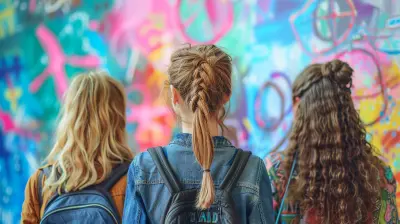
Collaborative Learning with Open Educational Resources
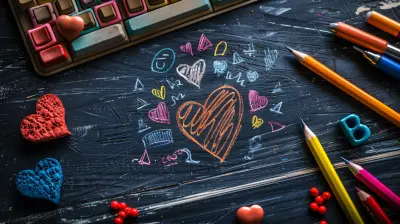
Promoting Positive Mental Health in Students with Special Needs

The Role of Reflection in Improving Your Time Management Skills

Understanding Financial Aid: Grants, Loans, and Scholarships

Using Figurative Language to Elevate Your Writing

Innovation in Education: Leading the Way to a Creative Learning Culture
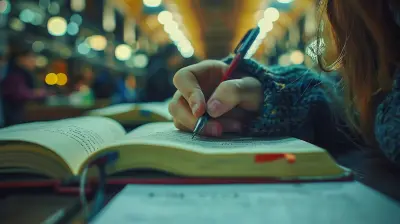
How to Avoid Clichés in Your Writing
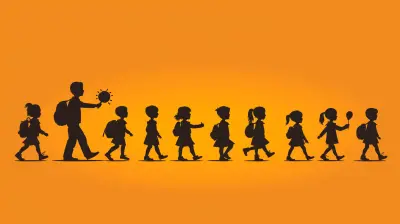
Empowering Students: Effective Strategies for Bullying Prevention

Open Educational Resources and Their Role in Distance Learning

How to Create a College Budget That Actually Works

Cultivating a Growth Mindset Through Self-Assessment